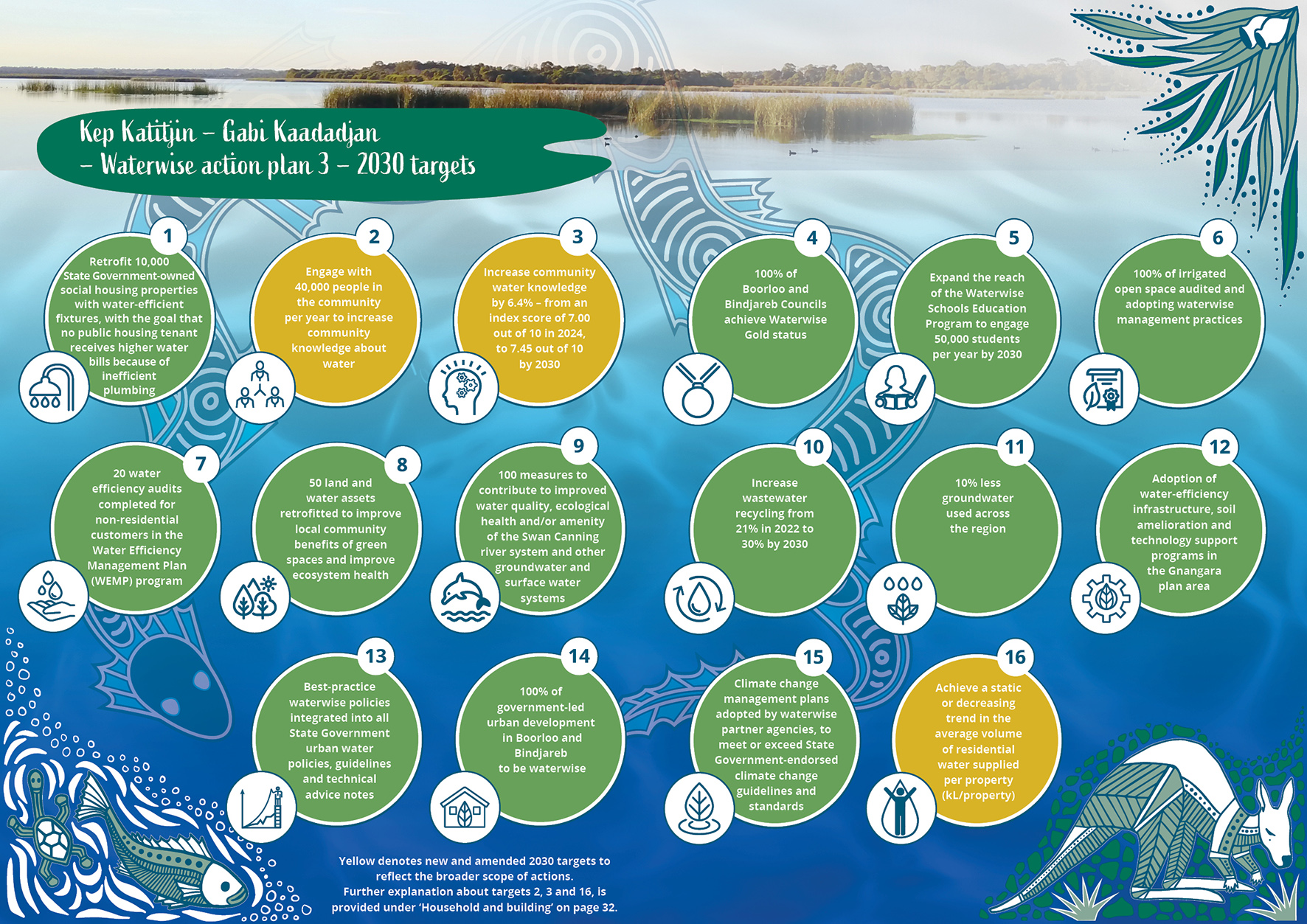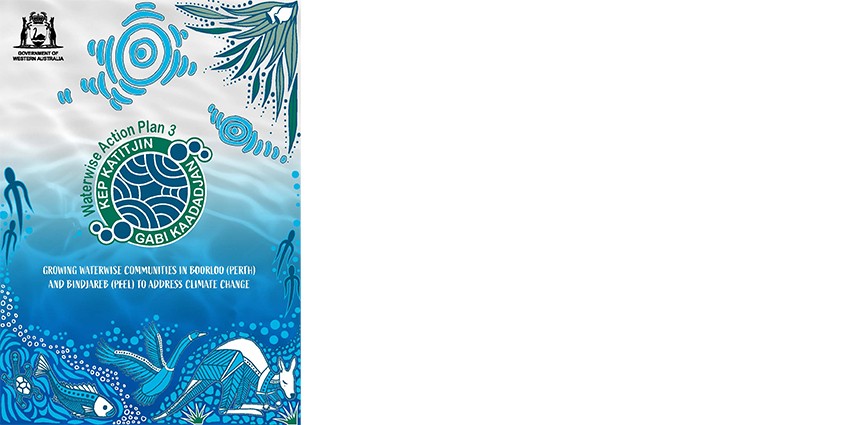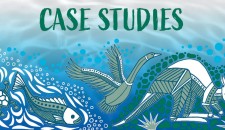The south-west of Western Australia is one of the world’s most climate change-affected regions. In response to this pressing issue, the State Government committed to a coordinated, long-term approach to managing the region’s water and creating climate-resilient waterwise communities.
No organisation alone can deliver on the complexity and scale required to tackle the challenge of growing communities facing the impacts of climate change.
The Waterwise Perth action plan 2019 was the first of successive across-government plans intended to transition Boorloo (Perth) and Bindjareb (Peel) to be leading waterwise communities by 2030. The initial eight participating agencies worked together to deliver waterwise outcomes for Boorloo and Bindjareb.
The success of this across-government approach led to three more agencies joining the collaborative effort to deliver Kep Katitjin – Gabi Kaadadjan Waterwise Perth action plan 2 (2022‒24). These 11 agencies are continuing to work in collaboration to deliver Kep Katitjin – Gabi Kaadadjan Waterwise action plan 3 (2024–27), which will take us past the halfway point in the journey to 2030.
While so much has been achieved by the program to date, the negative impacts on our precious water of a drying climate, population growth and urban intensification are as present as ever. The Bureau of Meteorology reports that in Greater Perth (Boorloo and Bindjareb), the summer 2023‒24 mean maximum temperatures were 1–3°C above average and seasonal rainfall totals were 80‒99 per cent below the summer average rainfall at most sites.
The 43 actions in Kep Katitjin – Gabi Kaadadjan Waterwise action plan 3 set out the continued response to these challenges, strengthening and deepening action and collaboration, helping us to conserve our water resources, support urban greening, biodiversity, the tree canopy and urban cooling to create climate-resilient communities.
The role of water sensitive urban design and waterwise approaches to mitigate urban heat, optimise infiltration to groundwater and manage stormwater are becoming more vital to how we respond to and adapt our urban spaces.
The Whadjuk and Bindjareb Noongar people are the Traditional Owners of Boorloo and Bindjareb and have been the custodians of the environment and water for tens of thousands of years. The previous plan was given the Noongar name ‘Kep Katitjin – Gabi Kaadadjan’ meaning water knowledge in both the Whadjuk and Bindjareb dialects, to reflect the Country the plan covers, the Boorloo and Bindjareb regions. We have been given permission to continue to use those words as we honour and respect the knowledge and understanding that Aboriginal people provide in waterwise management, conservation and spiritual practices that have kept the Country and the people healthy and in balance. We thank them for that naming.
Collaboration and walking together with a shared vision and objectives across all stakeholders lie at the heart of the Waterwise program. These principles are the foundation that enable innovative solutions to water and climate challenges and achieve greater overall benefit for Boorloo and Bindjareb communities. This way of working has been recognised by the Australian Water Association (AWA), with the Waterwise Perth action plan 2019 winning the association’s Organisational Excellence WA Award in 2023 and the national AWA award for Organisational Excellence in 2024.
Application of the waterwise program to regional Western Australia is new in the third plan. In this plan, we are carefully scoping how we can apply the learnings and experience gained over the previous plans to selected regional urban centres, recognising the pressures of climate change impacts across Western Australia, not just Boorloo and Bindjareb.
Case studies provide on-ground examples of success and demonstrate continuous improvement in our journey to leading waterwise communities by 2030. They are illustrations of the breadth and diversity of action being undertaken through the Waterwise program.
Holistic approach
Kep Katitjin – Gabi Kaadadjan is delivered by working across State Government, and in collaboration with Aboriginal people, industry, research, community, and local government.
The plan was developed with Danjoo Koorliny leaders and Bindjareb Elders on initiatives to heal the waterways and deliver enduring waterwise outcomes on Whadjuk and Bindjareb Country.
The plan is delivered through the collaborative efforts of 11 agencies – the Department of Water and Environmental Regulation; Water Corporation; the departments of Biodiversity, Conservation and Attractions; Education; Communities; Finance; Planning, Lands and Heritage; Local Government, Sport and Cultural Industries; Primary Industries and Regional Development; DevelopmentWA; and METRONET.
This infographic outlines the targets we are working to deliver by 2030.
Water story
The artwork for Kep Katitjin – Gabi Kaadadjan was designed by artist Darryl Bellotti. Darryl shared what these plans mean to him:
“Without water we cannot survive. We, as Indigenous and non-Indigenous people alike, now have a shared responsibility of carrying out that obligation for the survival of culture, the people, and all living things.”
Listen on Soundcloud to Darryl’s story behind the artwork for Kep Katitjin – Gabi Kaadadjan.
Document design
Waterwise 3 is honoured to continue to show Darryl’s artwork. Darryl’s message, inside the back cover of the plan, describes his art and meaning of the blue and teal colours.
When designing this plan, green was chosen together with the blue and teal to reflect the interconnectedness of water with green features of our environment.
Water, urban greening and blue-green infrastructure are part of the solution to mitigate and adapt to climate change with multiple social, health, environmental and financial benefits.
Case studies
These case studies provide on-ground examples that demonstrate the success of the Waterwise program and the continuous improvement in our journey to leading waterwise communities by 2030.






